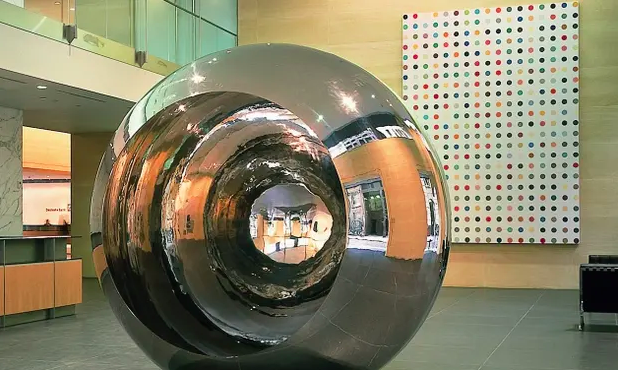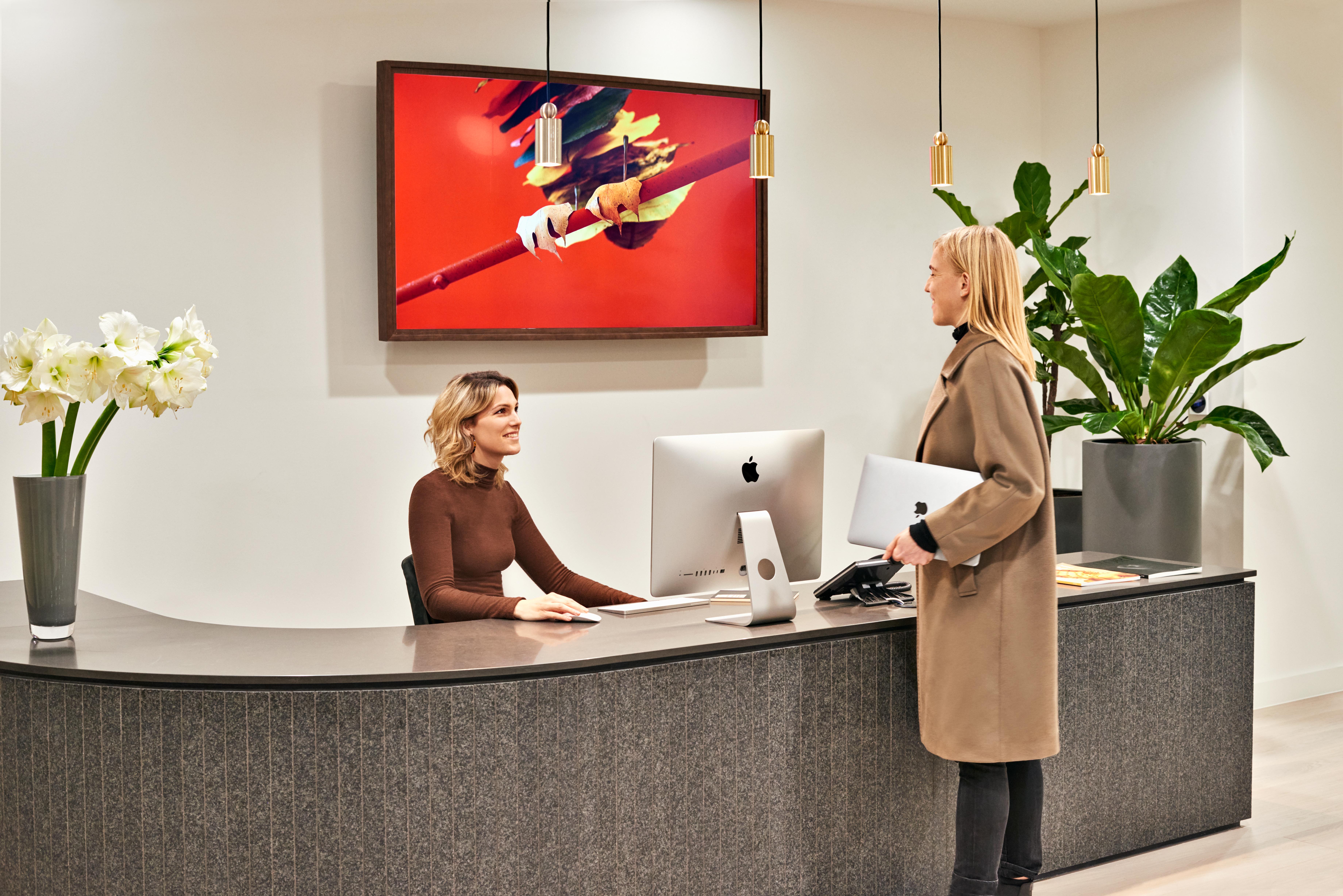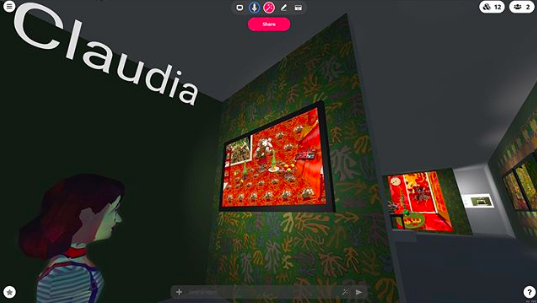by Joy Bernard
It has long been postulated by psychologists and scientists alike that a work environment which provides employees access to art inspires higher productivity rates and a better emotional climate. Countless studies conducted in recent years have indicated that workers who were surrounded by artworks in their office spaces were more incentivized to immerse themselves deeply in their professional commitments.
An avid example of such research is one that was published in Britain in 2016 by a team of researchers led by Dr. Craig Knight, who has been studying the psychology of working environments for over a decade at the University of Exeter. Dr. Knight told the Guardian at the time that he has noted that there is a “tendency to opt for sanitized, lean workspaces” that are “designed to encourage staff to avoid distraction.” However, the results of the study he had carried out with a group called Identity Realisation (IDR) revealed that “if you enrich a space people feel happier and work better; a very good way of doing this is by using art.”

Knight reached this conclusion while he attempted to understand what would make a work environment effective. He asked a group of participants to complete an hour’s worth of work in four different types of office spaces: Lean (containing only the necessary elements to do a task), enriched (including art and plants arranged in advance), empowered (same art and plants but participants could select where to place them) and disempowered (participants could arrange the art and plants but the experimenter then undid these personal touches).
What Knight discovered is that the individuals who worked in the enriched offices were 15 percent quicker than those employed in the lean office, and reported less health complaints. The figure doubled for those who worked in the empowered space.

Numerous companies, including those generating the most revenues and interest in markets worldwide today, have implemented the conclusions of studies such as Knight’s into their design of the work space. Some of the most well-known examples that come to mind are the offices of Apple, Facebook and Google. These corporations have famously hired esteemed architects to create beautiful work spaces for their employees and filled them with gorgeous artworks to inspire enjoyment and efficiency.
One example for a prominent brand that decided to make new media art a core aspect of its design is SalesForce, the U.S. cloud-based software company. The company invited media artist Refik Anadol to enhance its headquarters in California with his public art project, “Virtual Depictions: San Francisco.” The stunning work, composed of a series of parametric data sculptures that depict the story of the urban environment sprawled outside SalesForce’s offices, was displayed on a large LED screen visible to passersby walking near the building. Thus, both workers of the company and residents of the metropolitan were able to enjoy the art that was inspired by their lives and reflected to them a visual narrative they could connect with.
The incorporation of art into the work sphere doesn’t just benefit the business sector. It also helps support the creative community, whose members often struggle financially and depend on their galleries and collectors for inconsistent incomes. Another important advantage inherent in the integration of art into the business space is the impact it provides for both artists and businesses that want to cultivate their own unique statement.
So while it’s clear that there are more pros than cons to the inclusion of art in the work surroundings, a new question now arises: How can this be accomplished at a time when most of us are still shuttered in our homes since the outbreak of the coronavirus?
The arts and culture industry has already started making the leap from physical to digital, or attempts to connect the two where possible. Large events that brought people together are now offering an online alternative, such as the Burning Man festival that is taking place in cyberspace this year instead of its usual location in Nevada’s Black Rock Desert. Companies like Netflix are taking advantage of the current circumstances that have imposed a partial or complete isolation on most of us. The U.S. production company and streaming service has recently introduced a feature especially adequate for our times – the Netflix Watch Party, whereby users can join group chats and enjoy a synchronized video playback so the viewing experience can be shared.
Exhibition spaces are also harnessing the technological means at their disposal to continue providing art connoisseurs a personal viewing experience even if they can’t engage with the artworks face to face. Creative ventures like Bitforms Gallery have rendered digital art exhibitions accessible online, like the most recent solo show by American artist Claudia Hart, “The Ruins,” in which she presents her aesthetic interpretations of ruminations on an apocalyptic and disjointed world. Animation, augmented wallpapers, three-dimensional sculptural objects and other projects crafted by the esteemed creator and curator and presented on screens powered by Niio, would not have enjoyed viewership in the days of the pandemic had the gallery not opted for the online presentation mode.

In the business sector, matters are more complicated. Even if some countries have eased the social distancing measures that were initiated earlier this year, many workers are now still partially working from their homes and only venturing into their offices part-time. Online meetings have become the new norm overnight, and our living rooms have quickly transformed from places of repose to areas of work.
The good news is that employers can still cultivate pleasant surroundings for their workers, even if they are not all sharing the same space as before. All they require are the suitable digital tools that will assist in keeping their clients and employees connected. One way to do it is for business owners to digitally share with their workers art that will enhance their creativity and reduce their stress levels, a welcome feeling at such a period of intense uncertainty.
While bosses can go the old-fashioned way and send their staff static images of visual art, a more compelling medium that could draw their attention is digital art, namely moving image creations. Easier to transfer online and often more communicative and relatable than the average abstract painting, digital art was having its moment well before the pandemic upended our lives earlier this year.
The era we live in is indisputably inundated with screens and surfaces, making video art one of the most adaptable and relevant forms of art. If video art was only an emerging artistic phenomenon in the 1960s and the 1970s, today it is an inseparable part of the curriculum in major academic art institutions around the globe, a creative medium of choice for young artists and a central component of the collections of leading museums and galleries.
If you are wondering how to make your workers engage with video art and are not sure how to start, our platform is the first step on the way. If you are an employee or a business owner looking to enrich your online meetings, you are welcome to try out our selection of free Zoom backgrounds. The collection, which features carefully curated options crafted by talented international artists, can make it seem like you are in an aesthetic mansion with video art collections decorating the walls. You can also boost a digitized conference by installing in the background a single video artwork of the various creations we have on offer.
Niio’s digital art solutions are an easy way to increase your brand’s equity, make it memorable and expose it to as many viewers as possible. We have recently collaborated with various powerhouse companies, both in the realm of art as well as in marketing, to ensure that the artworks of the creators we team with will reach diverse viewers. One such joint venture has led to our campaign with Uber; various video ads, decorated by moving image artworks from our platform, are now displayed on screens installed atop Uber’s fleet of cars in major U.S. cities.
Another cooperative venture that has given voice to the work of artists throughout the world is the open call competition we launched with Samsung. Out of hundreds of submissions, three winning artworks selected by our panel of judges will be screened in select locations globally on Samsung’s The Wall, a top-of-the-line microLED display that will enhance the viewing experience these oeuvres deserve.
It is our mission to provide you with the most technologically advanced means to grace your companies or offices with art that will inspire and move you. Our display solutions have been developed and customized to showcase moving image art in the best conditions. Usable on both dedicated and shared screens and easy to install on existing screens, they are designed to ensure the optimal presentation. If you are not sure that you would like to commit to a year-round plan, our affordable subscription model, which comes in various options, will enable you to sample the services we provide.
Niio is rapidly becoming the equivalent of Spotify in the art world. We are the leading platform for connecting thousands of artists and galleries from all over the world that specialize in digital art. We turn screens on walls into digital art canvases that display beautiful moving artworks, which transform spaces and inspire audiences globally.
We began partnering with leading artists and galleries well before the pathogen emerged in order to create and sustain an alternative platform for the distribution and display of art. Our vision has now become more relevant than ever: Showcasing quality art online is not plan B or an undesired recourse. It is the natural next step to take for artists, exhibition spaces and businesses that want to display art that communicates and transcends geographical and cultural barriers.
